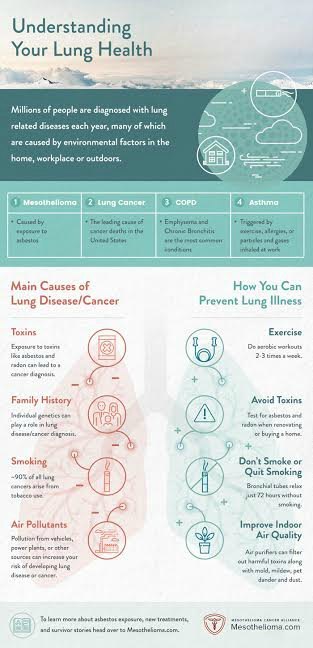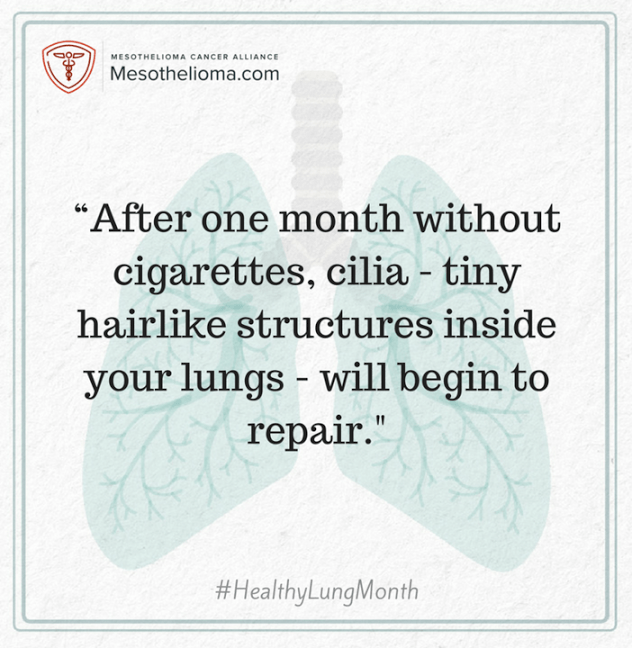5 Tips to Keep Your Lungs Healthy #HealthyTuesday
This post was created in collaboration with the Mesothelioma Cancer Alliance. I was not given anything for posting about this. November is National Lung Cancer Awareness Month.
Many of us go about our day without giving a second thought to the quality of the air we breathe. As November is Lung Cancer Awareness month, I wanted to take some time to highlight a few tips that will help ensure you are breathing quality air, and will hopefully reduce your chances of getting a lung disease later in life. (Please consult your doctor with any health related questions.)
5 Tips to Keep Your Lungs Healthy
The Indoor Threats
There are multiple indoor pollutants that can easily be removed through some simple additions to your home.
-
Buy air purifiers and dehumidifiers
Two of the biggest triggers for asthma are mold and dust. These particles collect and grow naturally, but that doesn’t mean they should be present. Mold grows very quickly in moist environments. To rid your home of mold you can buy a dehumidifier to take moisture out of the air. Ideally, you want to keep air moisture below 50% to reduce the risk of mold growth. If you tend to have a lot of dust build up in your home an air purifier might be what you need to ease your breathing troubles. Though purifiers cannot completely rid your home of toxins, it is a great addition to your health care routine to filter out particles that may be irritating your lungs and causing difficulty breathing.
-
Add indoor plants
The cheaper, more natural and best looking way to filter the air in your home is with an air purifying plant. Some of my favorites, that have also proven quite hard to kill, are bamboo and aloe vera. Plants are great for brightening a room while removing toxins like formaldehyde and ammonia released into the air from upholstery and cleaning products.
The Silent Hazards
-
Test your home for asbestos and radon
There may be carcinogenic toxins in your home silently impacting the health of your lungs without your knowledge. Asbestos was heavily used up until the 1980s as a building material due to its fire resistant properties. If the tiny particles are inhaled they can cause a rare cancer that is most often found in the lining of the lungs called mesothelioma.
Though asbestos is a known carcinogen it is still legally used in the United States. Additionally, depending on the ground that your home is built on there may be radon leaking in through cracks and gaps in the foundation. A natural, colorless and odorless gas, long-term exposure to radon is linked to about 20,000 cases of lung cancer in the United States each year. The safest way to find out if your home is impacted by asbestos and radon is to have a professional test and remove the material. Do not try to get rid of these toxins yourself.
The Outdoor Irritants
-
Avoid exercise in high traffic locations
You may not think about it, but when you exercise near high traffic areas, you are deeply breathing all the exhaust and pollutants in that air. Instead, work your heart and lungs in safe, open places like parks where the air will be less contaminated.
Your Own Habits
-
Don’t smoke
This one is simple. We have known for decades that tobacco smoke is harmful, with about 90% of lung cancer cases in the U.S. being attributed to cigarette smoke. You also could be putting those around you at risk through secondhand smoke, which is estimated to cause about 7,000 lung cancer deaths each year. The good news is your body immediately begins to repair itself once you quit smoking.
What do you do to help your breathing? I’d love to hear your tips!



